What Is the Point of All of This, Anyhow?
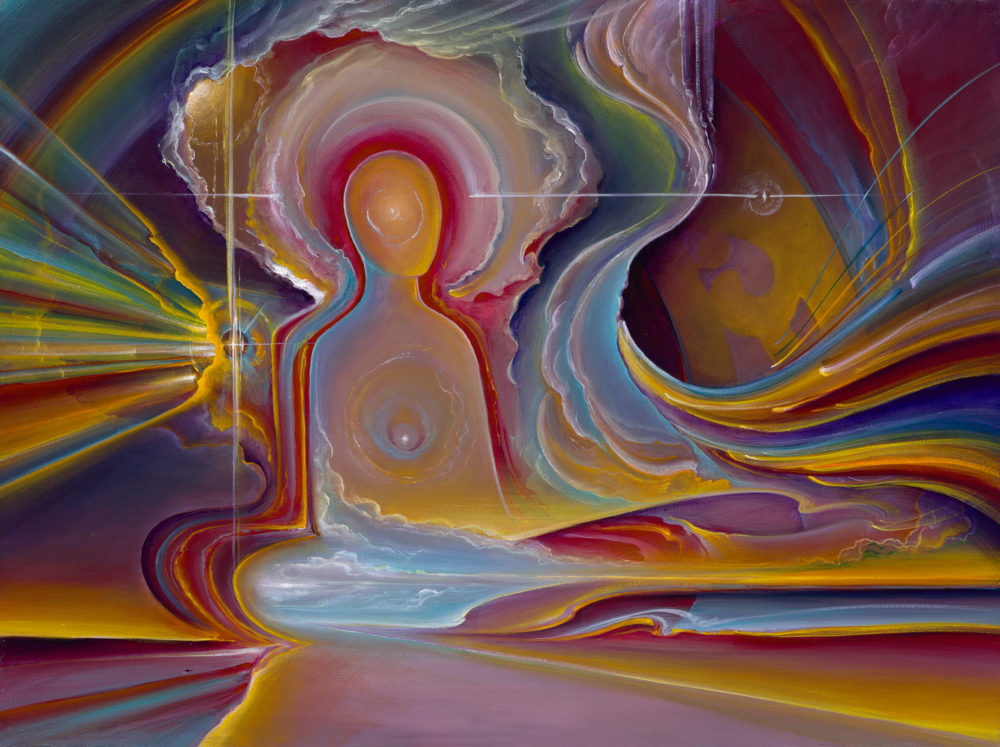
"It's nice that you make this art but what are you really doing? People talk about changing the world, about making a difference… how does this help the mother on welfare, or this or that… What difference do you think you are really making?"
Truth be told: I ponder this question all the time. I think about it while I'm driving around running errands and then going home and back to painting. What the hell am I doing anyways?
The Art of Becoming
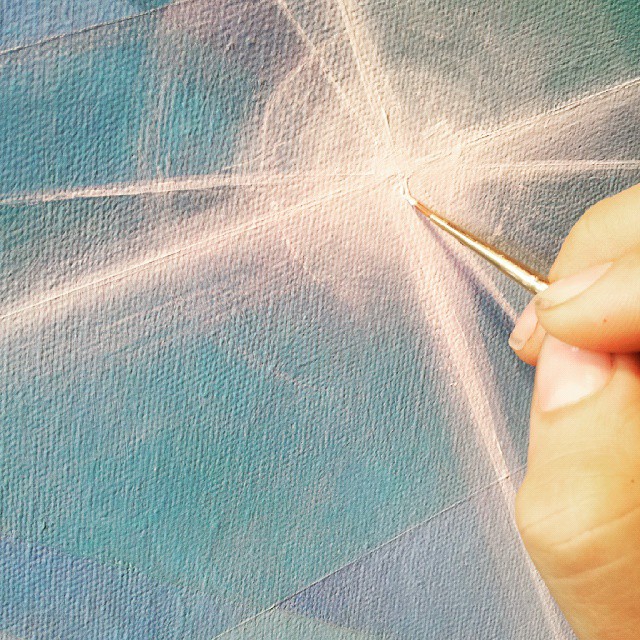
Making art is exploration. It is the act of becoming. We take what we have inside and bear witness to its messy beginnings, the warp and woof of it's threads and momentums, and weave it together to make the most beautiful vision we can - the most precious thing - of the art which is ours. And even that which is "ugly" can still be the most beautiful if done with love. It all leads back to that.
All of life is art. The act of life is art. Whatever is the thing which makes your soul sing, that is your art and when you do it well - when you preform your art - you feel alive. This is what art-making is. It is to be alive. It is practicing our own ever-becoming selves of this ever-becoming now.
The Beauty of Original Art
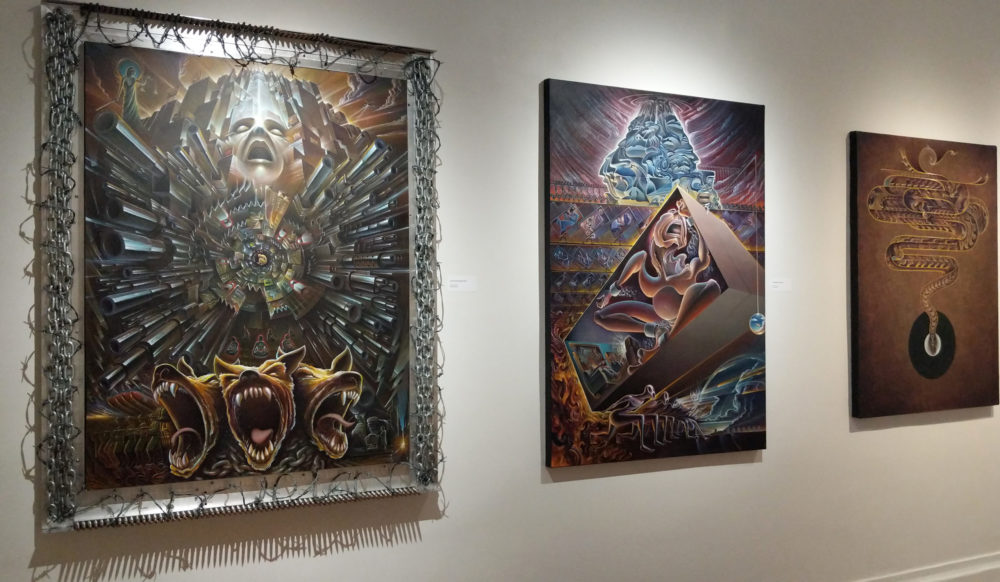
To own an original painting is as if to have the original playing - the live perfect performance - of a song. I've met many a musician who has, in a painting I've made, seen a visual representation of a song, much as I've heard many a song and, in that song, heard an auditory journey of a particular image.
Imagine if you could own Jimi Hendrix's "Axis" or Beethoven's 5th or Miles Davis' "Agartha". And so on. The canvas print of a painting is like the pristine vinyl recording. Paper prints and posters are like good quality CDs or your variable-kbps mp3. But the original work with all the nuance of brushtroke, the shifting tonality of the finish of the canvas, the ridges and craftsmanship of the paint: there is only one.
Woman At A Bar
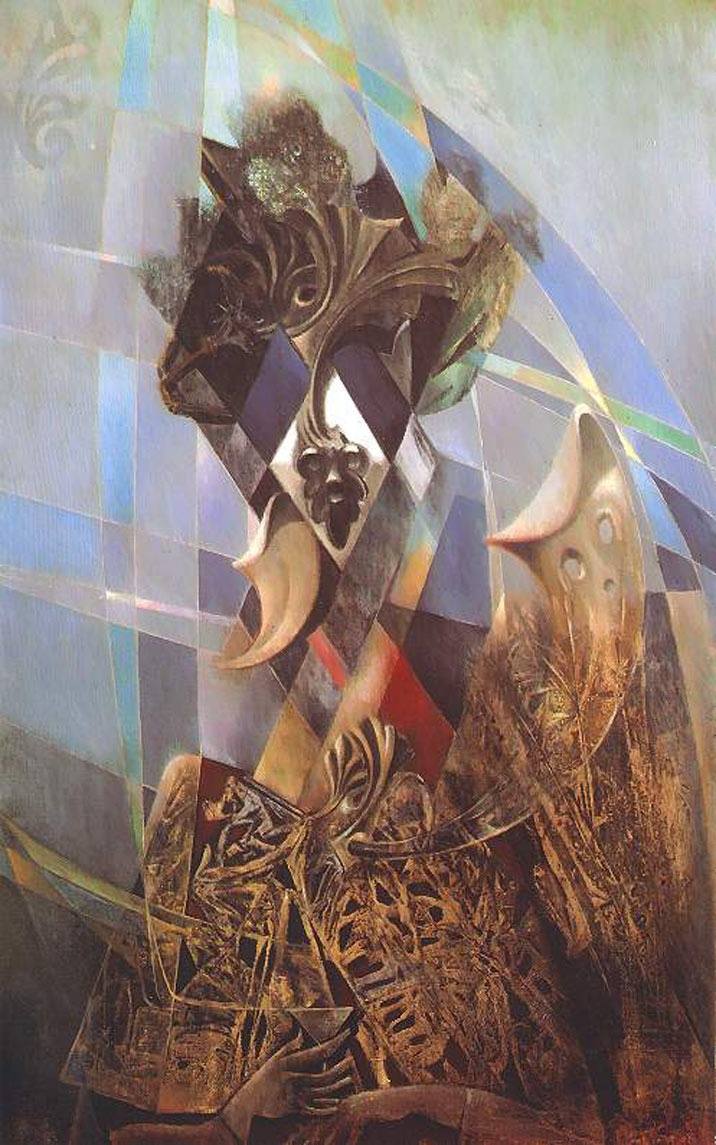
I wonder if anyone at an art show in 1900 said "O, look, ANOTHER painting of a woman at a bar." There's SO many paintings of a woman at a bar. Woman drinking at a bar. Woman sitting at a table near a bar. Then, sometime in 1945, Max Ernst comes along and says, "Hold my absinthe" and he paints 'The Cocktail Drinker."
The reason I mention this is you might look out on the artistic landscape and say: o another profile of a face, another soup of abstraction, another... and so on. But these paintings become the visual language of our current times. Out of those, arise a few particularly noteworthy pieces and we use those in the future to guide our understandings of ourselves.
The Emotional State of the Image

"I painted picture upon picture in keeping with the impression made on my eye in a moment of heightened emotion – painted the lines and colours that remained fastened to my inner eye... By painting the colours and lines and shapes I had seen in an emotional state – I wished to recapture the quivering quality of the emotional atmosphere like a phonograph."
Edvard Munch
This. A painting I make is based upon an impression made upon me by the experience of an emotional state. It is to be seen as if listening to a song.
Happy Accidents
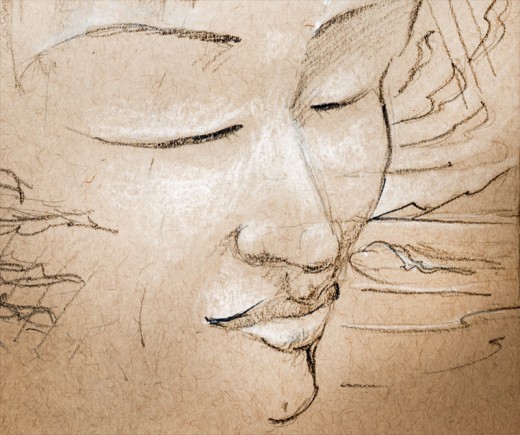
I assembled the stretcher bars to the desired size (18 x 14) and cut an appropriately sized rectangle of canvas. With pliers and staple gun I stretched it around the bars and then proceeded to gesso it. Once it appeared to be dry, I brushed on a background wash of yellow orange azo, burnt sienna, and a dash of dioxanine purple. But there was a several square inch spot in the middle of the bottom right corner that wasn't completely dry and so the wash picked up the gesso. This wasn't terrible in and of itself but it left a slight ridge between the original primed canvas and the freshly gessoed areas. I let it all dry and then went back and added more gesso to that area - creating a rather white sort of starburst on the yellow sienna background. After the gesso was dry I went back and washed over it with the original wash colors. Unfortunately this left sort of a lighter area under the final wash.
So turned the canvas upside down and suddenly it had the appearance of the sun setting behind a cloud bank. Magic. Perfect. And in just the right place....
Intentional Ambiguity Is Better Than Indecisive Vagueness
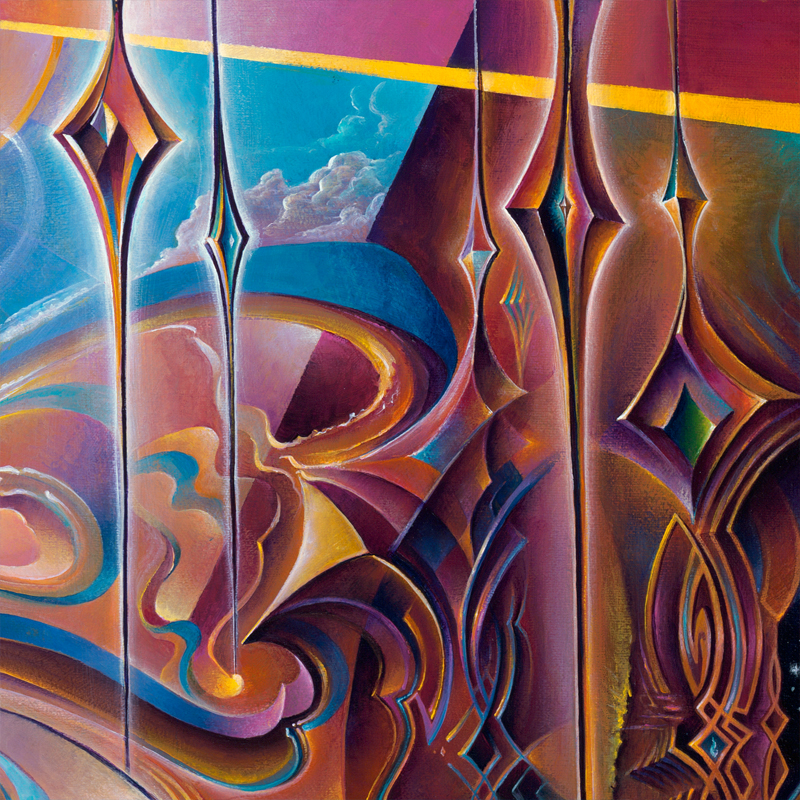
This is something I was thinking about while painting tonight. Often I leave things in my paintings rather ambiguous. Shapes are suggestive of animals or plants or clouds or structures. They are all inspired by countless things I see through the course of my days - the curve of the leaf of the plant in my garden or the arch of a cathedral I might happen upon. All of these things become part of the visual language and an artist can draw upon these shapes - even just the step of an edge or the clip of a curve - and use them to inform the work.
Now, the more you know - the more shapes and curves and lines and movements that you store in that visual memory - the more you can take your sense of 'I don't know what this is going to be' and simply shape it and allow it to take form and be informed by your visual memory and the feelings evoked by the different shapes you run across. Granted, it takes some practice to allow for the space to allow that through but with effort and practice (a sketchbook helps) you might find that this comes more easily than you realized.
The Rule of Thirds and Composition
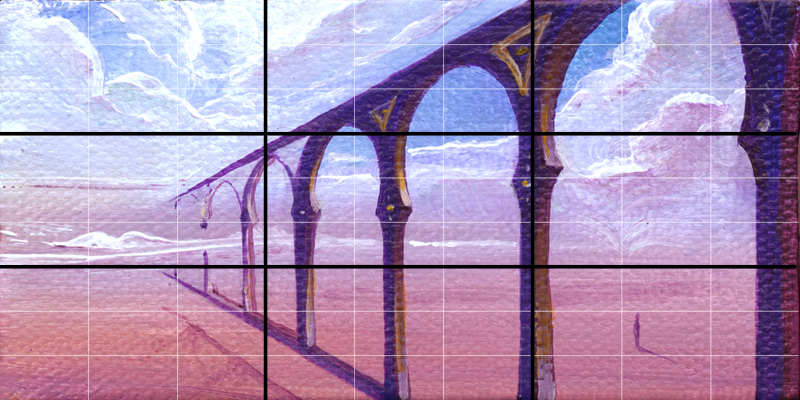
I'd like to talk about composition.
The Rule of Thirds is, I think, the best way to consider a composition. Using this little painting for an example - take a look at where the lines intersect the painting. It almost falls perfectly into it's respective sections. The right edge of the left third intersects the cloud opening and also the center of one archway. The left edge of the right third cuts through the column - balancing out the openings on the left. In the smaller thirds even, the small person falls in the middle third of the bottom right corner thirds. The lowest line of clouds, too, starts at the top of the bottom third of the painting and slowly drifts upwards. Between these and other details, the painting ends up falling into a nice order and feeling like a really balanced composition and ends up being more engaging and pleasing to the eye.
Painting the Feeling
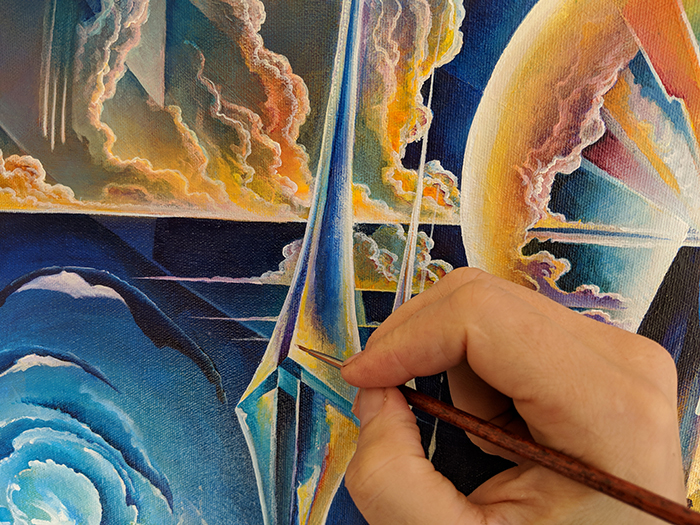
When you decide to be a painter - and I mean the painterly sort who is rendering shapes and objects and emotions - I think it's important to always remember that you aren't merely painting a representation of the thing, you are painting THE thing. It's not a cloud. It's all your feelings and ideas and archetypes of clouds. It's not a leaf, it's how the leaf feels and where it resides in your world. A successful painting has not only the subjects arranged and objects properly rendered according to your style and taste, but most importantly it captures the feeling, the sensation those objects and subjects are intended to evoke. For me, it always comes back to 'but how does it FEEL?' and I work outwards from there. I think the second mark of success of an artwork is that others can feel it too, without words or explanation. Then I feel we've really accomplished something.
Find What You Love (And Paint That)
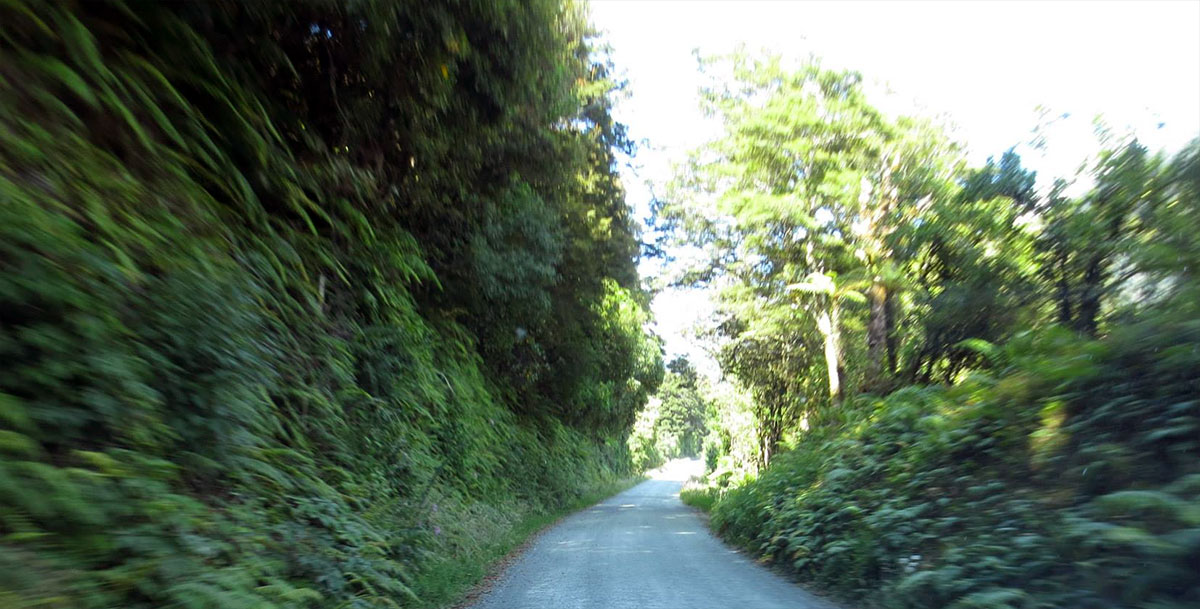
A number of years ago I was in a bookstore browsing art books as usual. In one book talking about the 'business of art'. In the book, the author wrote that if you find something you like to paint and you also find it sells, then you ought to paint more of that thing. For instance, the author said, if you paint cats and people like and buy those paintings of cats and buy those cat paintings, then paint more cats! And more cats! (This was the late-90s, by the way, and the internet had yet to be taken over by felines.) At the time, I thought that sounded a whole lot like selling out. Why would I want to paint the same thing over and over and over again? BOOOOORING.
I remember once I even tried to make a few 'similar' paintings because an idea had proven popular. My interest fizzled almost immediately though due to the fact that the subsequent images had no heart. They weren't birthed from an inner drive or a need to create something or reflective of some sort of personal process or vision. They were just… boring.